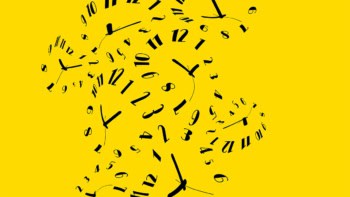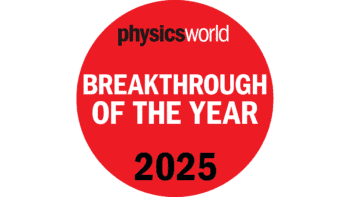Sky in a Bottle
Peter Pesic
2005 MIT Press
262pp £16.50/$24.95 hb

Who’s for some blue-sky thinking? The origin of the management cliché may be obscure, but it suggests the emptiness of the skies – in blue-sky thinking there should be no preconceptions. But when Peter Pesic indulges in some blue-sky thinking of his own in Sky in a Bottle, he finds that preconceptions have coloured thought on the sky’s blueness in more ways than one over the years.
Pesic begins back with the ancient Greek and Chinese philosophers, none of whom speculated on the sky’s colour because they considered it so detached from our normal world that it could not be considered in such everyday terms. The Greeks also had an attitude to colour that was very different to our own. Pesic points out that words like glaukos and kyanos that come closest to our words for the colour blue seem to have had more to do with brightness and darkness than a literal shade of blue. For the Greeks, colour was more a reflection of the spirit than an objective measure of wavelength.
Even so, it seems that Aristotle, or one of his students, was the first to ask why the sky appears as it does. Pesic quotes from On Colours in which the philosopher commented, “Air seen close at hand appears to have no colour, for it is so rare that it yields and gives passage to the denser rays of light, which thus shine through it; but when seen in a deep mass it looks practically dark blue.” It is remarkable that Aristotle recognized that “why is the sky blue?” is a question worth considering.
Pesic then goes on to categorize the different attempts to explain the sky’s colour into three broad groups. Some considered it to be a function of the air itself, others of particles suspended in the air, while the third group – typified by Aristotle’s early attempt – thought the colour to be an interaction between the air and something else, perhaps the darkness of space beyond.
By the time the baton of scientific curiosity had passed from the Greeks to the Arab world, there was more inclination to the second of Pesic’s categories. The 9th-century natural philosopher Al-Kindi believed that it was only possible for solid, tangible materials to have a colour. As air was not solid, any colour it exhibited had to be produced not by the air itself, but by some solid floating in it – perhaps a suspension of dust that reflected sunlight with the blue tint that we ascribe to the sky.
As Pesic guides us along the procession of natural philosophers and scientists that have taken on the sky, all the way through to Rayleigh and Einstein, he also brings in the artists. As realism crept into medieval painting, it was no longer possible to portray the sky as merely bright; it also had to have colour, and Sky in a Bottle follows the development of artistic thought on sky colours from Giotto through to Ruskin.
However, the most significant observations that Pesic makes remain in the scientific sphere. The gradual understanding of the link between the blue sky and scattering by air molecules uncovers a surprising amount of information. Pesic calls the colour of the sky “the most beautiful proof of atomic theory”, and who could argue?
Perhaps the most original and entertaining part of Sky in a Bottle is the section of experiments at the end. Here the reader is encouraged to copy historical attempts to reproduce the colouring of the sky, from Ristoro and Da Vinci’s dubious assertion that it is possible to generate blue from layers of white and black pigments, to Tyndall’s bottled sky blue, which used tiny precipitated particles from a chemical reaction to produce scattering. Even though few may take the trouble to try out these experiments, they help break down the boundary between writer and reader.
The narrative would have benefited from a few more “I didn’t know that!” moments. When describing Newton’s octave of colours in the visual spectrum, for example, it would have been worth mentioning that the colour orange did not get its name until the 17th century, taking it from the fruit. And the account of Maxwell’s early colour photography could have been spiced up by relating how his colour plate only worked by accident. His emulsion proved not to be sensitive to red, but it happened that the object being photographed, a piece of tartan, gave off significant ultraviolet from the red dye, and it was this, not the redness, that Maxwell’s plate picked up.
A more significant omission is the author’s decision to limit the science to the pre-quantum era. Quantum electrodynamics might not be the easiest subject to describe, but it would have been well worth extending the description of the scattering process to include a post-Victorian view of the interaction of light and matter.
Even so, Sky in a Bottle has a clever premise that enables a rare blend of science and art. There is something particularly appealing about answering such a basic question as why the sky is blue. Any child with that mild excess of curiosity that might one day lead to a scientific career is likely to ask it. Yet beneath the simplicity lies not only some intriguing physics, but also a challenge that owes as much to philosophy as it does to science. And that is what makes Pesic’s book a small delight.



